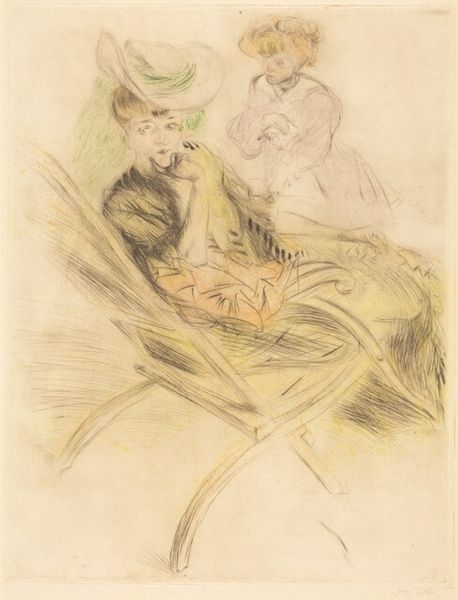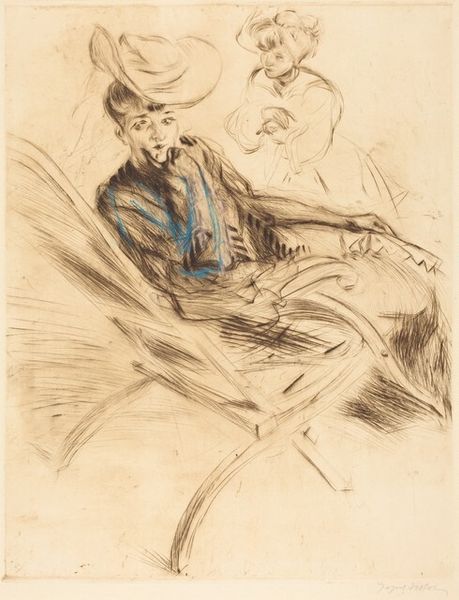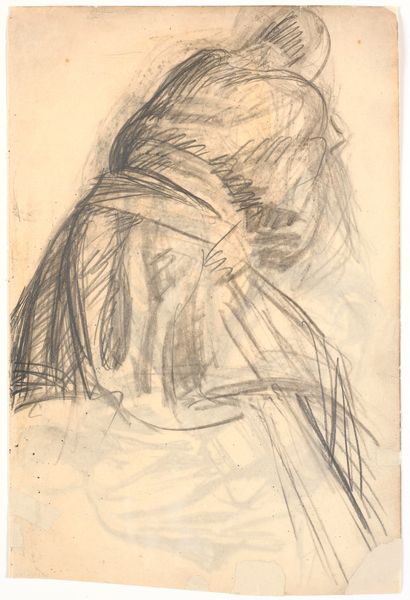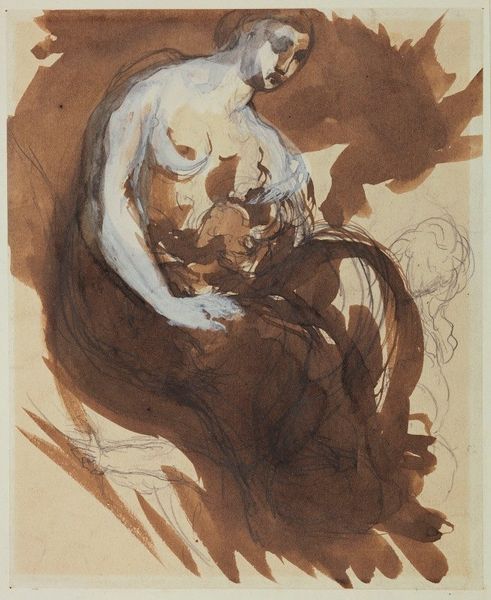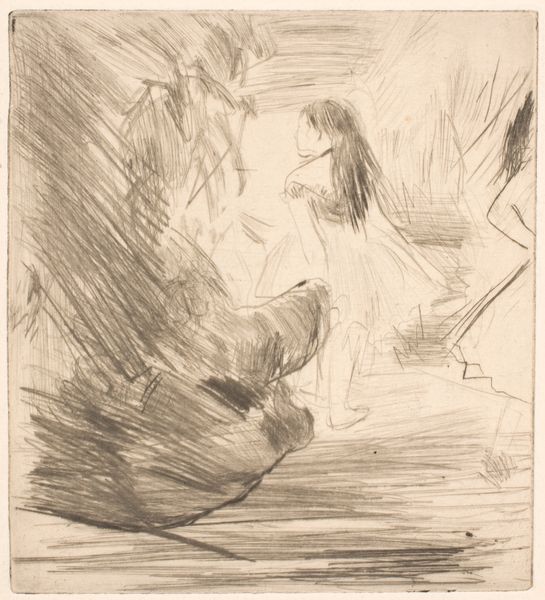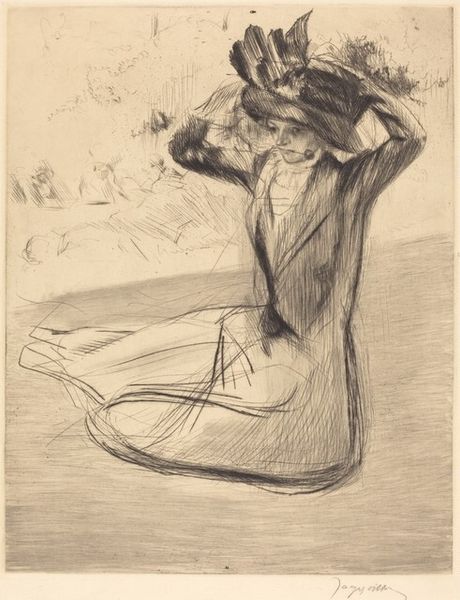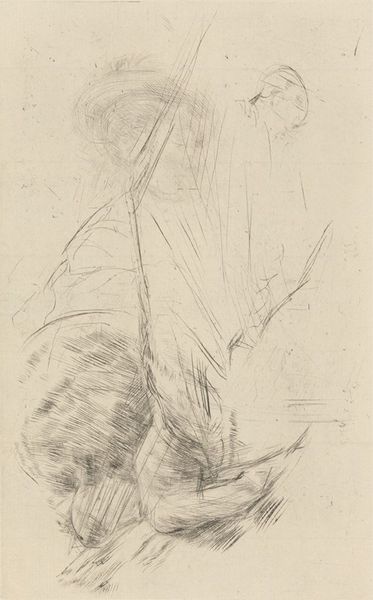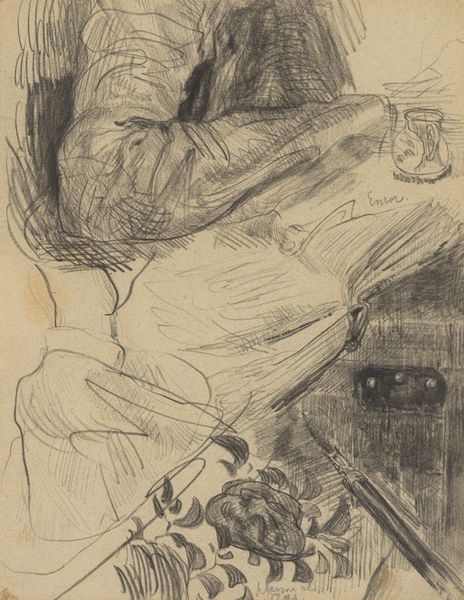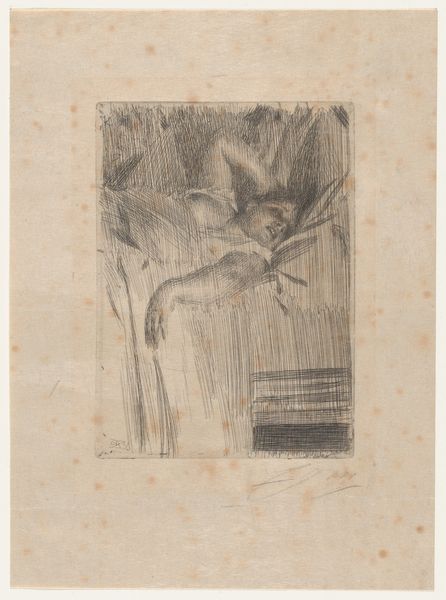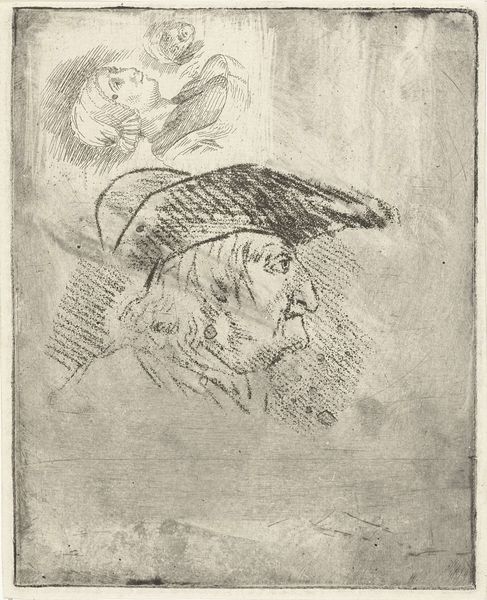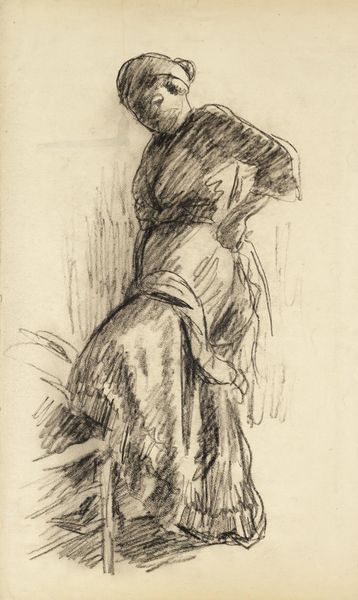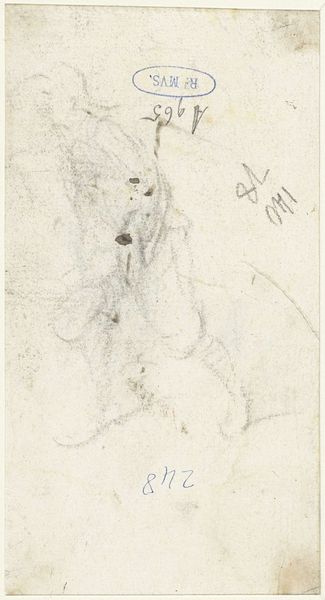
print, etching
#
portrait
#
art-nouveau
# print
#
etching
#
pencil sketch
#
figuration
#
watercolor
Dimensions: plate: 53.5 x 41.7 cm (21 1/16 x 16 7/16 in.) sheet: 65.2 x 50.3 cm (25 11/16 x 19 13/16 in.)
Copyright: National Gallery of Art: CC0 1.0
Curator: "Gaby in a Chaise Longue" by Jacques Villon. This artwork from 1906 uses etching techniques to create an intimate portrayal. What’s your initial read? Editor: Pale! Everything feels intentionally faded, almost dreamlike. Is that intentional or related to the etching medium itself? Curator: Good question! It’s both, actually. Villon was experimenting with printmaking at this time, pushing the limits of etching and aquatint to mimic the effects of watercolor and pencil drawings. Notice the fine lines and delicate shading; these are deliberate choices showcasing the artist’s command of his craft. The work embodies an era where printmaking was shifting from reproductive means towards an independent and appreciated form. Editor: The hat she’s wearing and the lounging position give a distinctive stylistic statement that connects the portrayed woman with relaxation and fashion of those times. I wonder how the image was received in society? What signs did it evoke to viewers back then? Curator: Fashion undoubtedly played a role, dictating her pose and attire. What’s also relevant is considering who Gaby was. The casual presentation, her relaxed state suggests a domestic, private scenario. In contrast, this may reflect a societal shift towards a less formal and restrictive view of women in private settings. But it also hints at the class involved here; having time for leisure, a comfortable setting, those elements point towards a privileged social context. Editor: Absolutely. The composition and posture suggest the idea of 'the gaze,' specifically, being looked at or observed, which raises themes regarding identity, private and public views, even feminine ideals, as this certain Gaby’s image tells a wider societal narrative through symbolic means. Curator: Right, the chaise lounge is also important here as it represents wealth and comfort, contributing to a certain idea of femininity in the early 20th century. By employing such careful, detailed printmaking methods, Villon created something more significant than simply Gaby relaxing. Editor: So, an etching becomes not just a picture but an account of social conditions, labour value, and growing ideas. I find it incredibly relevant to connect material with symbolic representation! Curator: Agreed! This nuanced portrayal captures the transitional period and is brought forth by Jacques Villon’s choices to explore all potentials of etching and aquatint. Editor: Examining the artwork’s form through cultural associations adds several meanings to what we observe on the surface!
Comments
No comments
Be the first to comment and join the conversation on the ultimate creative platform.
